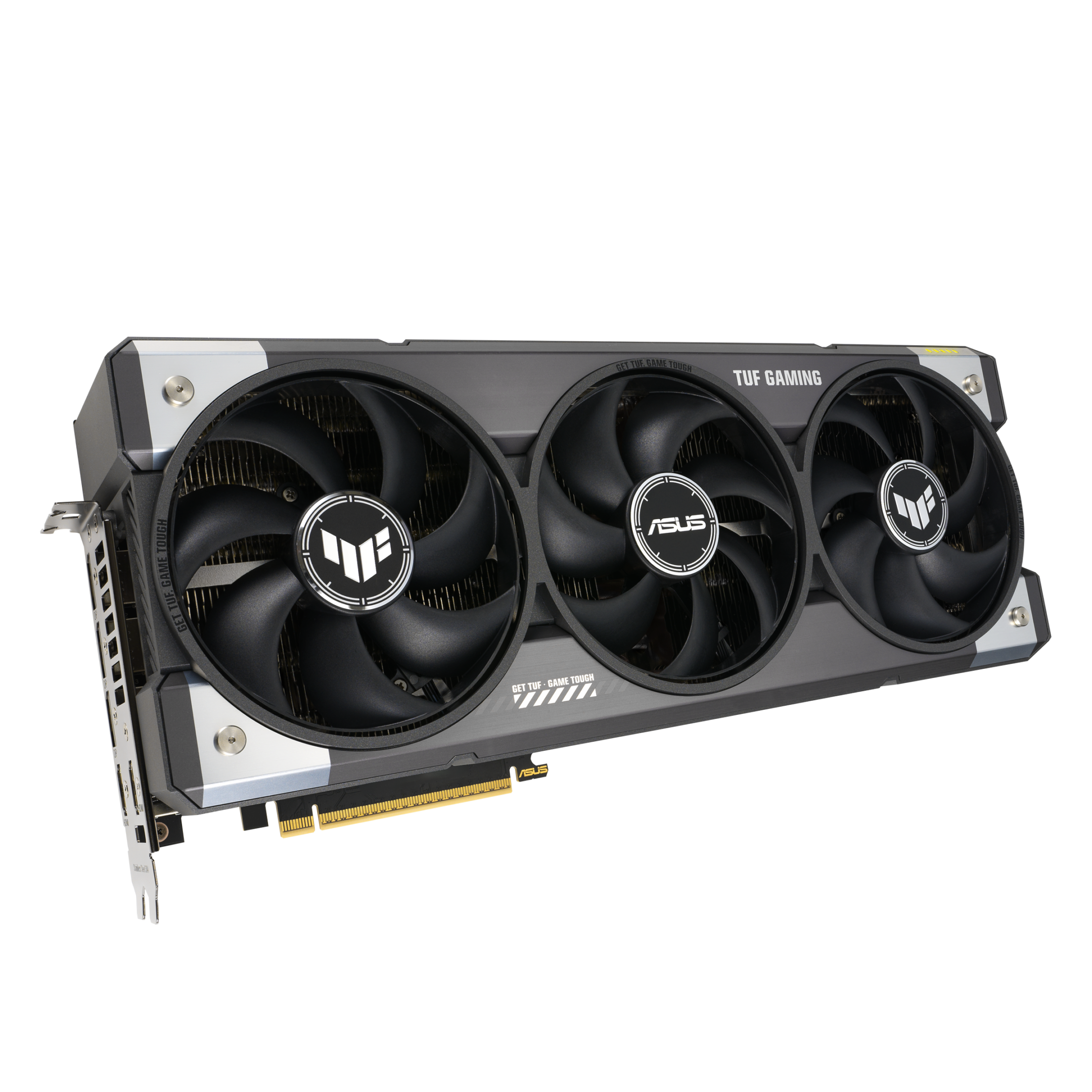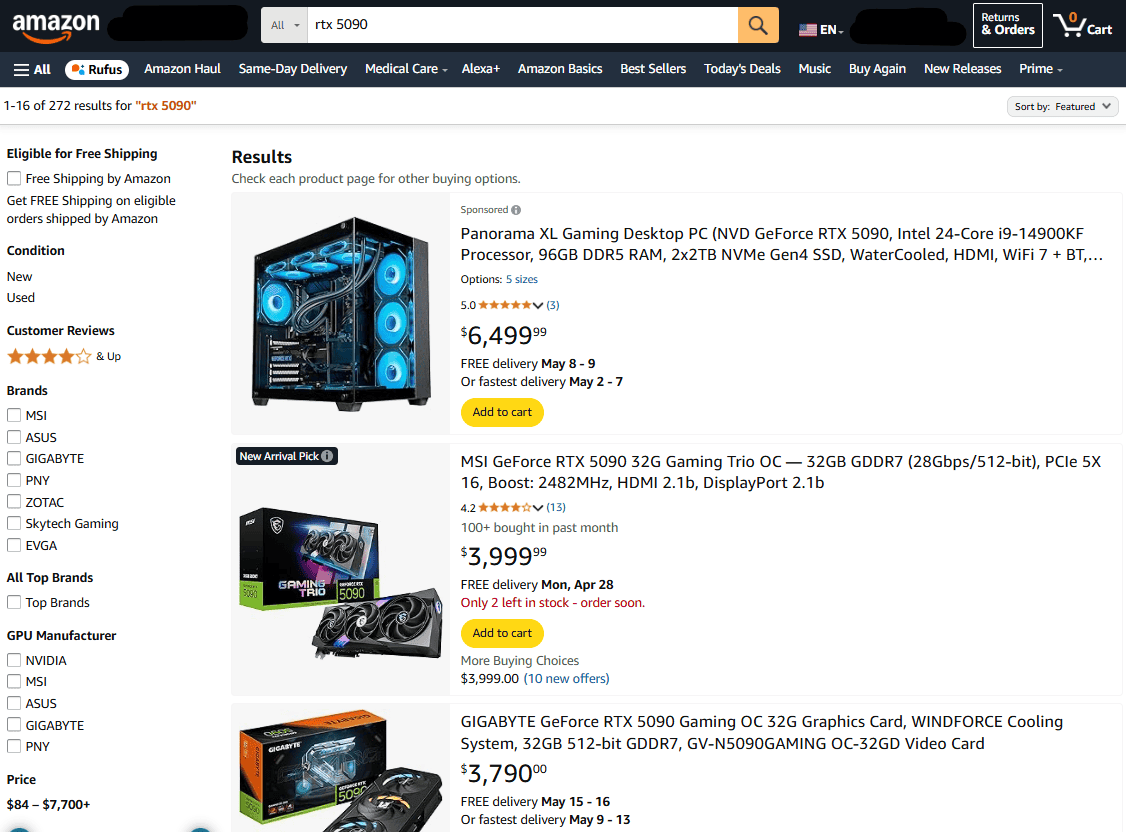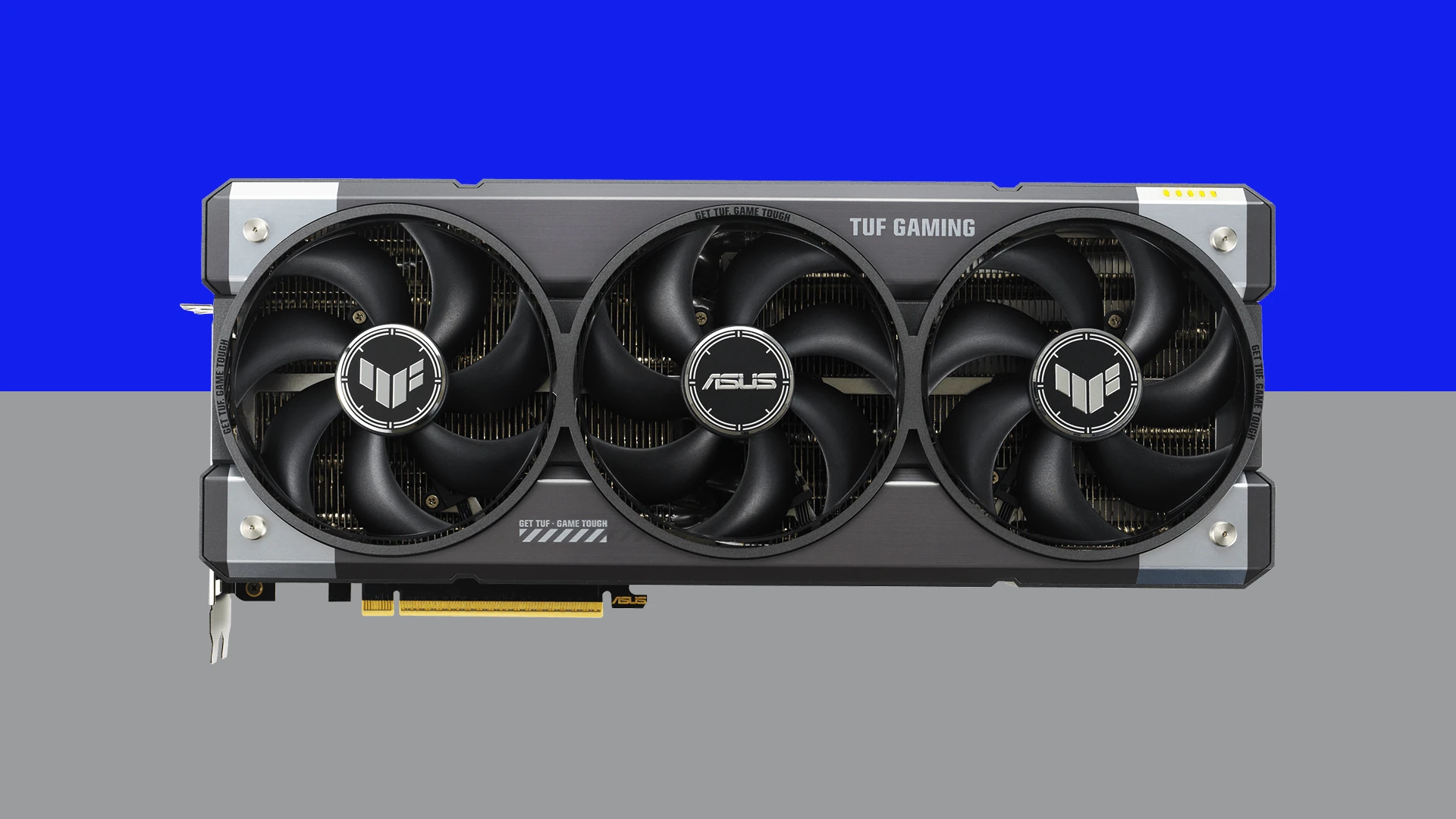Nvidia’s powerhouse GeForce RTX 5090 has officially stormed onto the scene, raising the bar for gaming, content creation, and AI workloads — but actually getting your hands on one remains a major challenge. While third-party manufacturers are expected to restock RTX 5090 cards throughout May 2025, demand continues to far outpace supply, making shortages likely for the foreseeable future. And with tariff uncertainty hitting every importer in the US, its not likely that the shortage issue will be resolved anytime soon.
At an MSRP of $1,999, the RTX 5090 doesn’t just bring a new price point — it delivers a massive leap in raw power. But most retail buyers will never see anything close to that price. Retailers have had to push higher costs out of the gate due to tariffs and shortage issues and the secondary market for the 5090 has been anywhere from 50% – 100% higher after markups.

Built on Nvidia’s new Blackwell architecture, it boasts 21,760 CUDA cores, a massive 32GB of GDDR7 memory, and staggering memory bandwidth of 1.8 TB/s over a 512-bit bus. For serious builders, it also demands serious hardware — a 1000W+ PSU is recommended for stable performance, and the card itself can draw up to 575W under heavy loads.
Where the RTX 5090 truly shines is its new generation of AI-enhanced features. It includes DLSS 4 with Multi-Frame Generation, a big step beyond the already impressive DLSS 3.5. The technology now offers Ray Reconstruction improvements, further sharpening lighting, reflections, and shadows, while Super Resolution boosts frame rates even in traditionally demanding 4K and 8K gaming environments. Early benchmarks show the RTX 5090 outperforming the 4090 by 30% to 40% in major titles like Cyberpunk 2077 (Overdrive mode) and Alan Wake 2.
However, Nvidia made a deliberate shift in the card’s design philosophy. Unlike the RTX 3090 Ti and 4090, the 5090 drops VRAM ECC (Error Correction Code) support. ECC, a feature that corrects memory errors, is critical for professional tasks like 3D rendering, scientific computing, and AI model training. By removing it, Nvidia signals a stronger focus on the enthusiast gamer and high-end consumer market, leaving professional users to look toward the upcoming Blackwell workstation cards instead.
Currently, both reference models and factory-overclocked variants (such as ASUS ROG Strix, MSI SUPRIM, and Gigabyte AORUS Xtreme editions) are trickling into the market, but they’re often sold out within minutes. Scalping has returned as a major issue, with some cards being resold for upwards of $2,800 or more on secondary markets. According to reports, major U.S. retailers like Micro Center and Best Buy are receiving limited shipments weekly, with more substantial restocks anticipated closer to mid-May.

Check latest RTX 5090 pricing and availability on Amazon: https://amzn.to/4cKNPkC
Upgrading To An RTX 5090
For gamers and creators still clinging to older hardware — particularly those on GTX 10-series or early RTX 20-series cards — the upgrade to an RTX 5090 is nothing short of transformative. Native 4K gaming at ultra settings, without relying heavily on upscaling technologies, is finally achievable in even the most taxing games. In esports titles like Valorant and CS2, players are seeing frame rates that break past 800 FPS at 1080p, maximizing competitive advantage on ultra-high refresh rate monitors.
There’s also growing buzz around a blower-style RTX 5090D variant, spotted in leaks from Bilibili, which could be aimed more toward AI workstations and tight-case builds. While not officially confirmed by Nvidia yet, such a card would broaden the RTX 5090’s appeal beyond traditional gamers.
In short: the RTX 5090 delivers one of the largest generational leaps Nvidia has ever produced — but getting one without paying a premium will likely require patience, persistence, and maybe a bit of luck through the rest of spring 2025.
Where to Buy the RTX 5090

If you’re trying to track down an RTX 5090 without getting gouged by scalpers, here are the best strategies:
- Best Buy: Best Buy frequently restocks Nvidia GPUs online and in select physical locations. Restocks usually happen early in the morning (around 6–9 AM local time) on Tuesdays and Thursdays, but inventory moves fast.
- Micro Center: If you live near a Micro Center, they are one of the best places to find RTX 5090s at MSRP. Some stores offer in-person only sales to deter bots, and Micro Center often posts online inventory counts you can check before making the trip.
- Newegg: Newegg restocks have been sporadic but happen multiple times a week. Keep an eye out for Newegg Shuffle events, where the RTX 5090 occasionally appears in bundles.
- Amazon: While Amazon listings tend to fluctuate wildly in price, some direct-sold units (sold by Amazon.com, not third parties) do occasionally drop closer to MSRP. Set up stock alerts using tools like Keepa to get notified instantly.
- Nvidia Official Store: Nvidia sometimes lists Founder’s Edition cards directly through its website or partners. These drops are rare but tend to sell at MSRP when available.
- B&H Photo: B&H often stocks higher-end GPUs, especially the professional and workstation variants. They’re worth checking if you’re seeking AIB models like the ASUS ROG Strix or MSI SUPRIM X.
- Local and Regional Retailers: Smaller electronics stores, especially regional chains, sometimes receive unnoticed stock. Calling ahead and getting on waiting lists can pay off.
Pro Tip:
Many successful buyers recommend setting alerts through stock-tracking sites like HotStock, NowInStock, or using Discord groups that monitor live inventory updates. Patience and speed are key — most RTX 5090 cards sell out within minutes of going live.
Key Takeaways
- The RTX 5090 costs $1,999, requires a 1000W power supply, and features DLSS 4 technology for significant performance gains.
- Nvidia has removed VRAM ECC support that was present in previous flagship models, potentially affecting professional workload performance.
- The massive performance improvement makes the RTX 5090 an excellent upgrade choice for users with older generation graphics cards.
Technical Details and Architecture
The GeForce RTX 5090 represents NVIDIA’s most advanced gaming GPU to date, featuring significant improvements in core architecture, raw computing power, and memory subsystems compared to previous generations.
Blackwell Architecture and Innovations
The RTX 5090 is built on NVIDIA’s new Blackwell architecture, which succeeds the Ada Lovelace generation. This architecture brings substantial changes to the GPU’s fundamental design. The card features an upgraded CUDA core configuration that delivers improved parallel processing capabilities for standard gaming workloads.
Ray tracing performance sees a major boost with enhanced RT cores. These specialized processors handle the complex calculations required for realistic lighting effects, shadows, and reflections in games. The third-generation RT cores in the Blackwell architecture process ray-traced scenes more efficiently than previous generations.
Tensor cores have also been upgraded to support more advanced AI processing. This improvement directly benefits DLSS technology and other AI-enhanced features that have become increasingly important in modern gaming experiences.
Performance Metrics and Benchmarks
The RTX 5090 operates at a base clock of 2017 MHz, with boost frequencies reaching up to 2407 MHz under optimal conditions. This represents a modest frequency increase over previous generations, but the architectural improvements provide more performance per clock cycle.
In raw processing power, the card delivers approximately 1.5x the performance of the RTX 4090 in traditional rasterization workloads. Ray tracing performance shows even more dramatic improvements, with some scenarios showing nearly double the performance of the previous flagship.
Power efficiency has also improved despite the performance gains. The card maintains similar power consumption levels to its predecessor while delivering substantially more performance per watt.
Gaming benchmarks at 4K resolution show consistent 100+ FPS performance in demanding titles with all settings maximized, including ray tracing effects.
Memory and Bandwidth Enhancements
The RTX 5090 comes equipped with 32GB of GDDR7 memory, double the capacity of the RTX 4090. This generous allocation provides future-proofing for upcoming games with increasingly large texture assets and complex scenes.
Memory speed has been increased to an effective 28 Gbps, with the implementation of a 512-bit memory bus. This combination delivers an impressive memory bandwidth of 1,792 GB/s, representing a substantial increase over the previous generation.
The increased memory bandwidth directly benefits gameplay at higher resolutions, particularly 4K and 8K gaming scenarios. It also improves performance in memory-intensive workloads like content creation, 3D rendering, and AI processing tasks.
The price for this flagship card starts at $1,999, reflecting its position as NVIDIA’s premium offering for enthusiasts and professionals who demand the absolute best performance available.
Gaming and Content Creation
The RTX 5090 represents a significant leap forward in both gaming performance and content creation capabilities. With its Blackwell architecture and 32GB of GDDR7 memory, it delivers unprecedented power for demanding tasks across multiple domains.
Gaming Performance Enhancements
The GeForce RTX 5090 sets new standards for gaming performance with its massive array of CUDA cores. Compared to previous generations, the 5090 offers substantially higher frame rates across all resolutions, particularly at 4K and 8K. Games that previously struggled to maintain 60 FPS at 4K now easily exceed 100 FPS with all settings maximized.
Benchmark testing shows the RTX 5090 performs 35-45% faster than the previous flagship in most modern titles. The card’s boost clock speeds enable smooth gameplay even in the most demanding scenarios.
Popular titles like Cyberpunk 2077 can now run at 4K with ray tracing enabled while maintaining frame rates above 90 FPS, something unattainable with previous hardware generations.
Real-Time Ray Tracing and DLSS
The RTX 5090’s ray tracing capabilities have been significantly enhanced, allowing for more realistic lighting, shadows, and reflections in real-time. The dedicated RT cores process complex lighting calculations much faster than previous generations.
DLSS 4 technology represents a major advancement over previous iterations. This AI-powered upscaling solution now delivers even sharper image quality while requiring fewer native pixels to be rendered. The combination of frame generation and super resolution techniques can boost performance by up to 3x in supported titles.
Key DLSS 4 improvements include:
- Reduced artifacts in motion
- Better preservation of fine details
- Lower latency compared to DLSS 3
- Improved stability with fast-moving objects
Illustrating 4K and 8K Capabilities
The RTX 5090’s 32GB of GDDR7 memory provides ample headroom for high-resolution textures and assets needed for 4K and 8K content. For content creators, this translates to faster rendering times and more efficient workflows.
Video editing benchmarks show the card processes H.265 4:2:2 10-bit footage more than twice as fast as software decoding methods. This performance advantage grows even more significant with 8K footage.
3D artists benefit from dramatically reduced rendering times. Complex scenes that previously took hours can now be completed in minutes. The RTX 5090 particularly excels in applications like Blender and DaVinci Resolve.
For professionals working with multiple high-resolution displays, the 5090 maintains fluid performance even when driving multiple 4K monitors simultaneously, eliminating bottlenecks in multi-display setups.
Frequently Asked Questions
The RTX 5090 brings significant improvements in performance and technology compared to previous generations. Many potential buyers have questions about specifications, pricing, and real-world capabilities.
What are the specifications of the new NVIDIA GeForce RTX 5090?
The NVIDIA GeForce RTX 5090 is powered by the new Blackwell architecture. It comes equipped with 32GB of GDDR7 memory, which is faster than the memory used in previous generations.
The card features advanced Ray Tracing capabilities and improved DLSS technology. Some units have been identified with a manufacturing issue where they have one fewer ROP (Render Output Unit) than specified, though this affects less than 0.5% of cards.
What is the expected price range for the NVIDIA GeForce RTX 5090 graphics card?
The NVIDIA GeForce RTX 5090 has a starting price of $1,999. This positions it as a premium graphics card in the consumer market.
Actual retail prices may vary depending on the manufacturer, model features, and market availability. Custom versions from partner manufacturers often come with additional features that may increase the price.
What advancements does the NVIDIA GeForce RTX 5090 offer over its predecessors?
The RTX 5090 introduces the new Blackwell architecture, replacing the Ada Lovelace architecture of the 40-series. The card features faster GDDR7 memory, which provides higher bandwidth for improved game performance.
Ray tracing capabilities have been enhanced for more realistic lighting effects. AI processing has also been improved for better DLSS performance, allowing for higher framerates with less image quality loss.
How quickly is stock expected to deplete for the NVIDIA GeForce RTX 5090 upon release?
Based on previous high-end GPU launches, stock for the RTX 5090 is likely to sell quickly. The limited supply and high demand for top-tier graphics cards typically lead to rapid depletion of initial inventory.
Some retailers like Micro Center are preparing for the launch with special purchasing processes. Consumers interested in getting an RTX 5090 should monitor official channels for availability updates.
Is the NVIDIA GeForce RTX 5090 capable of running games at 8K resolution?
The RTX 5090, with its powerful Blackwell architecture and 32GB of GDDR7 memory, is designed to handle demanding gaming scenarios including 8K resolution. The card has sufficient processing power and memory bandwidth to run modern games at 8K.
Performance at this resolution will vary by game and settings. DLSS technology will play a crucial role in maintaining playable framerates at such high resolutions.
What benchmarks have been released for the NVIDIA GeForce RTX 5090 graphics card?
Comprehensive benchmarks for the RTX 5090 are still emerging. Early tests show significant performance improvements over the previous generation RTX 4090, particularly in ray tracing scenarios.
The card shows especially strong performance in AI-accelerated workloads and professional applications. Gaming benchmarks demonstrate substantial frame rate increases in both traditional rasterized rendering and ray-traced titles.







